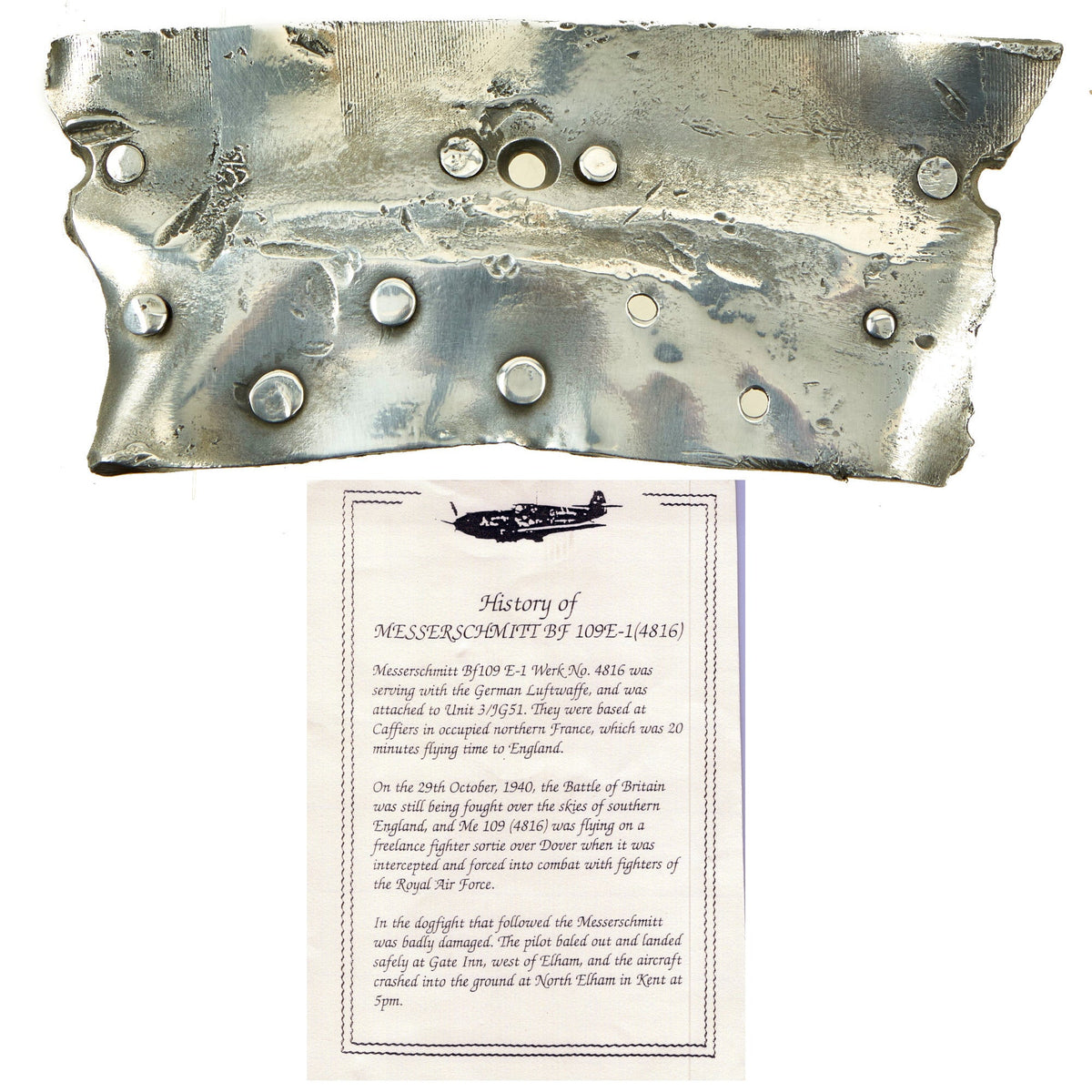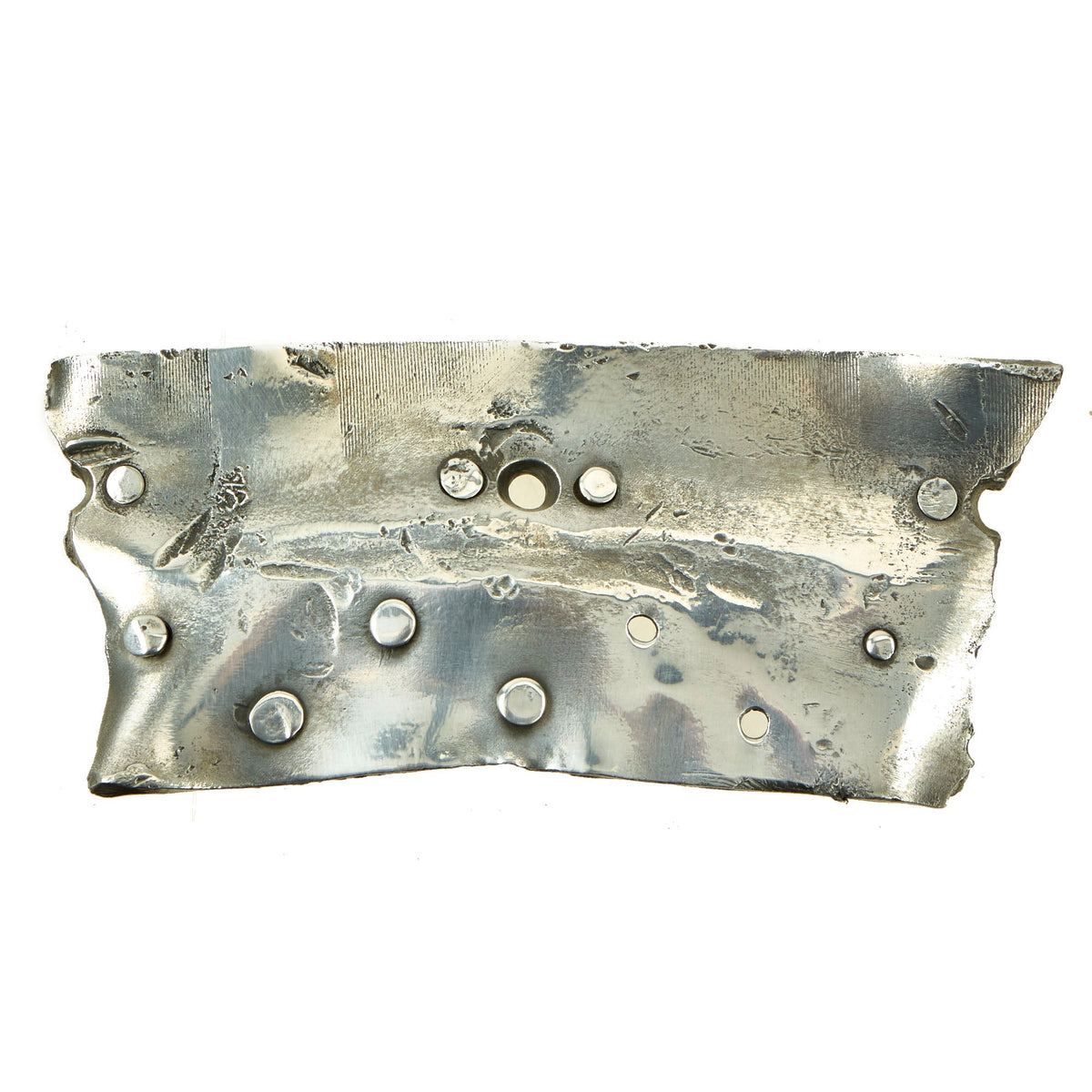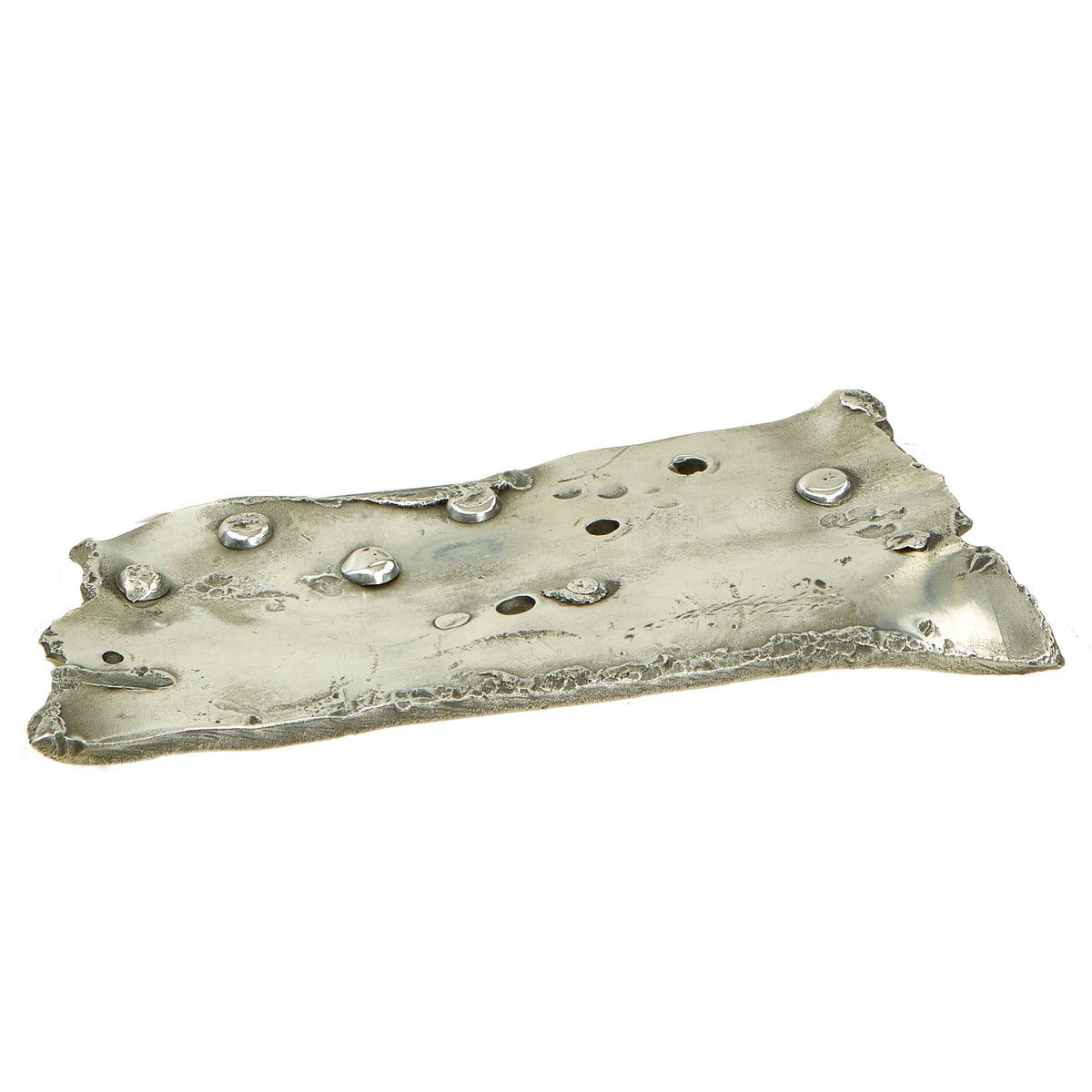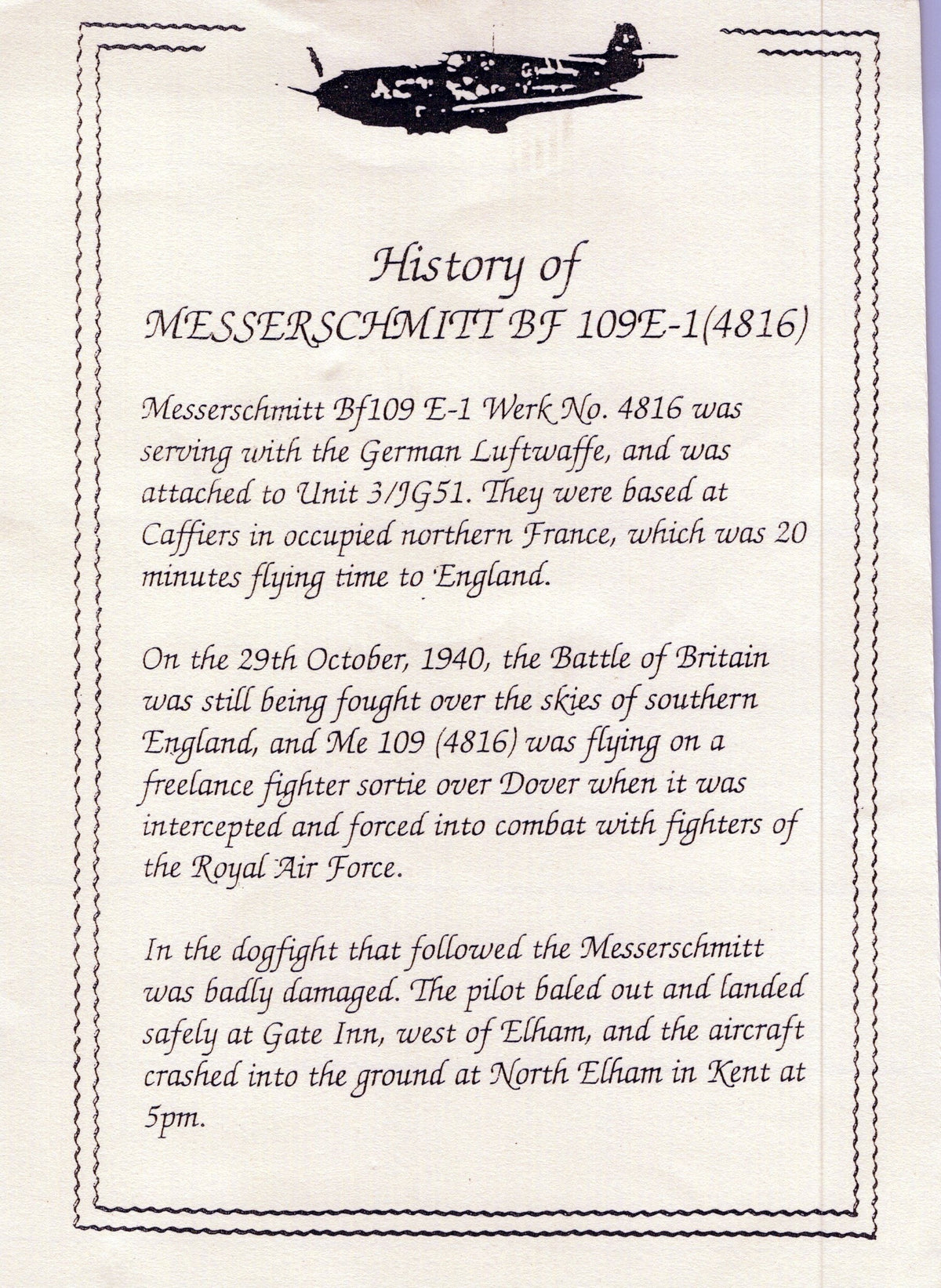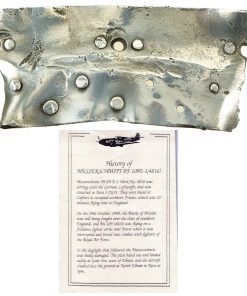Original German WWII Battle of Britain Messerschmitt Bf109 E-1 No. 4816 Wreckage Piece – Crashed After Dogfight, Piece Recovered In Kent Original Items
$ 195,00 $ 78,00
Original Item: Only One Available. This is a fantastic desktop display item that was recovered from a BF-109 crash sight in Kent, England. In late 1938, the Bf 109E entered production. To improve on the performance afforded by the 441–515 kW (600–700 PS) Jumo 210, the larger, longer Daimler-Benz DB 601A engine was used, yielding an extra 223 kW (300 PS) at the cost of an additional 181 kg (400 lb). A much bigger cooling area was needed to disperse the extra heat generated by the DB 601, and this led to the first major redesign of the basic airframe. Enlarging the existing nose-mounted radiator sufficiently to cool the engine would have created extra weight and drag, negating some of the performance gains afforded by the increased power, so it was decided to move the main radiators to the undersurfaces of the wings immediately outboard of the junction of the wing root and wing panel, just forward of the trailing edges’ inner ends, leaving the oil cooler under the nose in a small, streamlined duct. The new radiator position also had the effect of counterbalancing the extra weight and length of the DB 601, which drove a heavier three-bladed Vereinigte Deutsche Metallwerke (VDM)-made propeller.
To incorporate the new radiators, the wings were almost completely redesigned and reinforced, with several inboard ribs behind the spar being cut down to make room for the radiator ducting. Because the radiators were mounted near the trailing edge of the wing, coinciding with the increased speed of the airflow accelerating around the wing camber, cooling was more effective than that of the Jumo engined 109s, albeit at the cost of extra ducting and piping, which was vulnerable to damage. The lowered undercarriage could throw up mud and debris on wet airfields, potentially clogging the radiators. To test the new 1,100 PS (1,085 hp, 809 kW) DB 601A engine, two more prototypes (V14 and V15) were built, each differing in their armament. While the V14 was armed with two 7.92 mm (.312 in) MG 17s above the engine and one 20 mm MG FF in each wing, the V15 was just fitted with the two MG 17s mounted above the engine. After test fights, the V14 was considered more promising and a pre-production batch of 10 E-0 was ordered. Batches of both E-1 and E-3 variants were shipped to Spain for evaluation, and first saw combat during the final phases of the Spanish Civil War.
History of Messerschmitt BF 109 E-1 (4816)
Messerschmitt Bf109 E-1 Werk No. 4816 was serving with the German Luftwaffe, and was attached to Unit 5/9951. They were based at Caffiers in occupied northern France, which was 20 minutes flying time to England.
On the 29th October, 1940, the Battle of Britain was still being fought over the skies of southern England, and Me 109 (4816) was flying on a freelance fighter sortie over Dover when it was intercepted and forced into combat with fighters of the Royal Air Force.
In the dogfight that followed the Messerschmitt was badly damaged, The pilot bailed out and landed safely at Gate Inn, west of Elham, and the aircraft crashed into the ground at North Elham in Kent at 5pm.
A lovely item ready for further research and display.
Fast Shipping with Professional Packaging
Thanks to our longstanding association with UPS FedEx DHL, and other major international carriers, we are able to provide a range of shipping options. Our warehouse staff is expertly trained and will wrap your products according to our exact and precise specifications. Prior to shipping, your goods will be thoroughly examined and securely secured. We ship to thousands clients each day across multiple countries. This shows how we're dedicated to be the largest retailer on the internet. Warehouses and distribution centres can be located throughout Europe as well as the USA.
Note: Orders with more than one item will be assigned a processing date depending on the item.
Before shipping before shipping, we'll conduct a thorough inspection of the items you have ordered. Today, the majority of orders will be delivered within 48 hours. The delivery time will be between 3-7 days.
Returns
The stock is dynamic and we cannot completely manage it because multiple stakeholders are involved, including our factory and warehouse. So the actual stock may alter at any time. It's possible that you may not receive your order once the order has been made.
Our policy is valid for a period of 30 days. If you don't receive the product within 30 days, we are not able to issue a refund or an exchange.
You can only return an item if it is unused and in the same state as the day you received it. You must have the item in its original packaging.
Related products
Uncategorized
Uncategorized
Uncategorized
Uncategorized
Uncategorized
Uncategorized
Uncategorized
Uncategorized
Australian WWII Owen MK1 Machine Carbine SMG Custom Fabricated Replica with Sling Original Items
Uncategorized
Band of Brothers ORIGINAL GERMAN WWII Le. F.H. 18 10.5cm ARTILLERY PIECE Original Items
Uncategorized
Uncategorized
Uncategorized
Uncategorized
Uncategorized
Uncategorized
Uncategorized
Uncategorized
Armoured Fighting Vehicles of the World: AFVs of World War One (Hardcover Book) New Made Items
